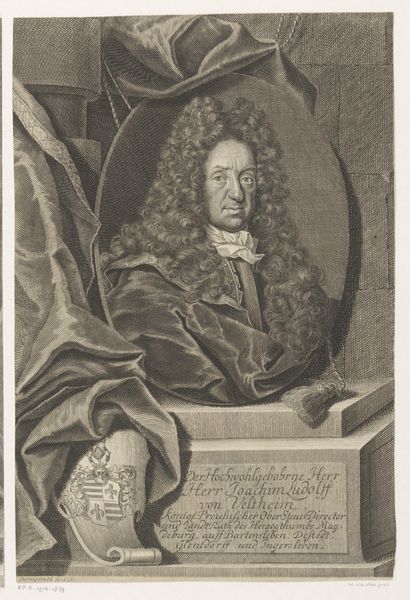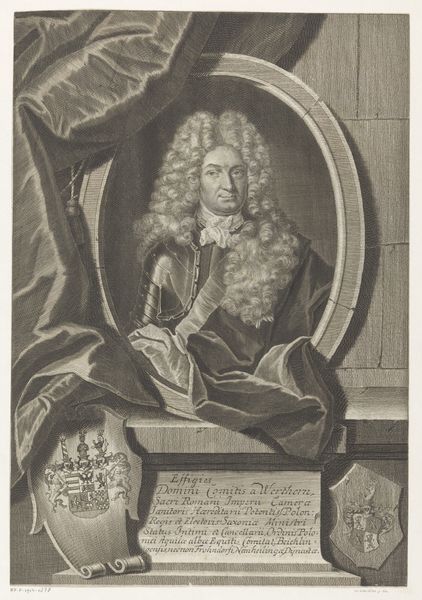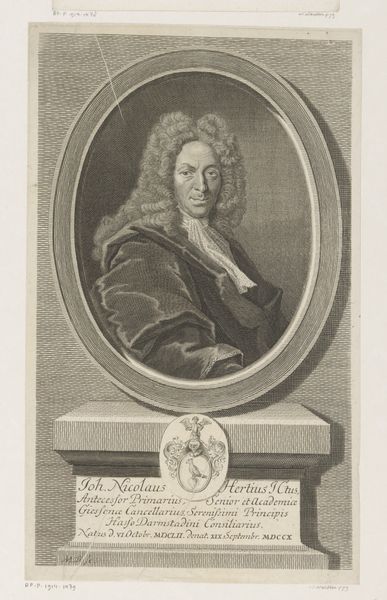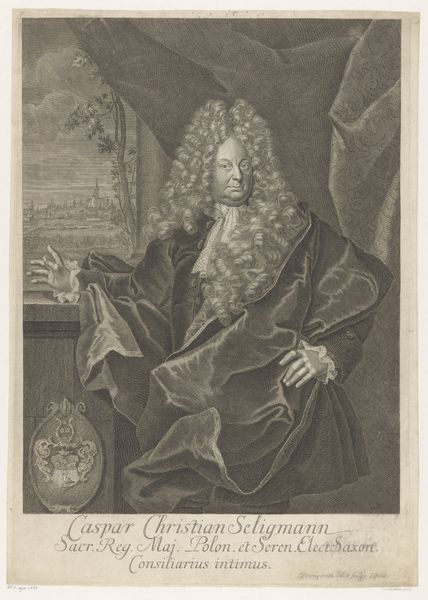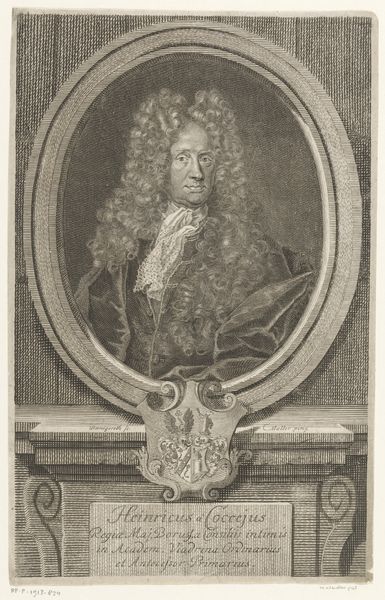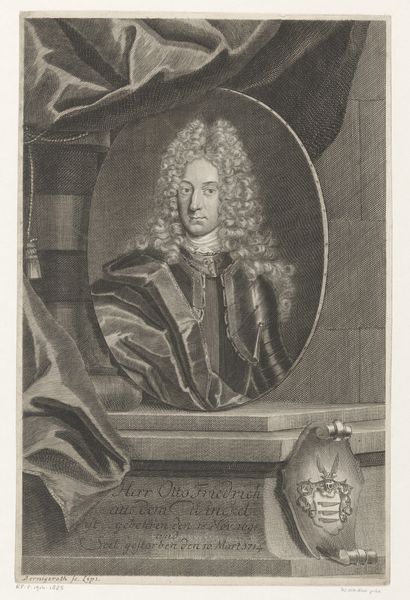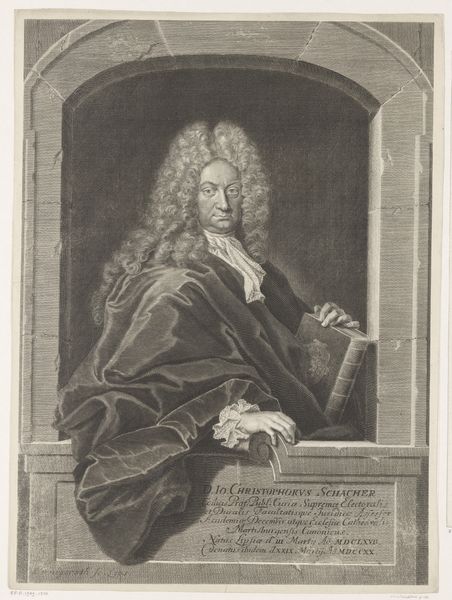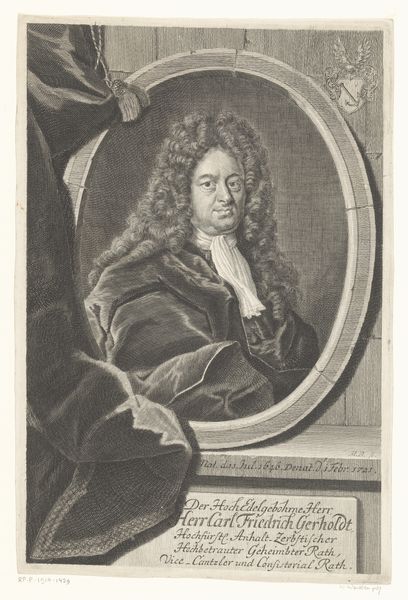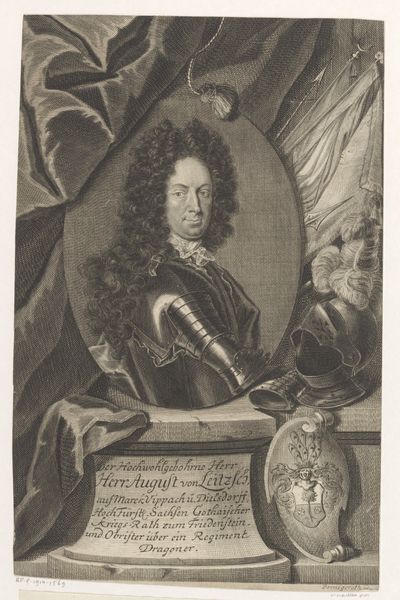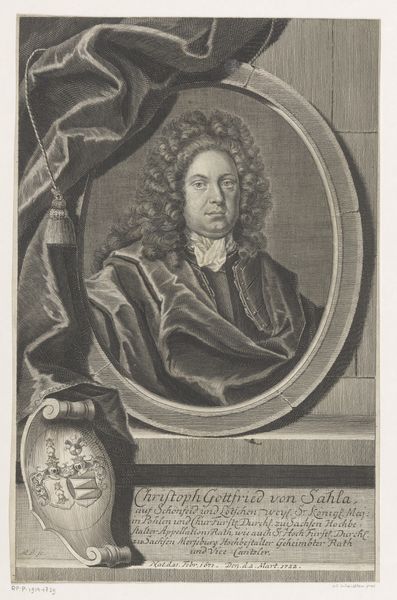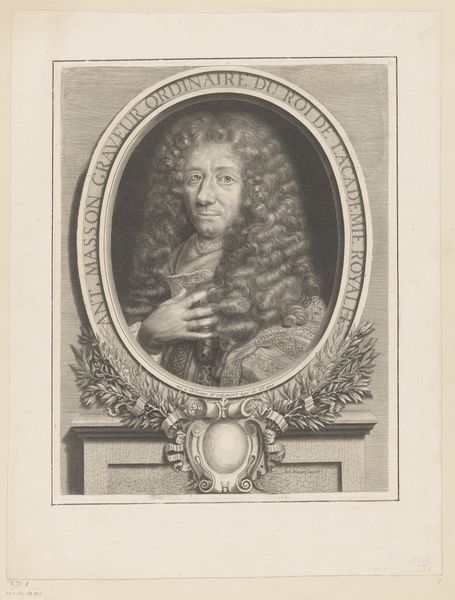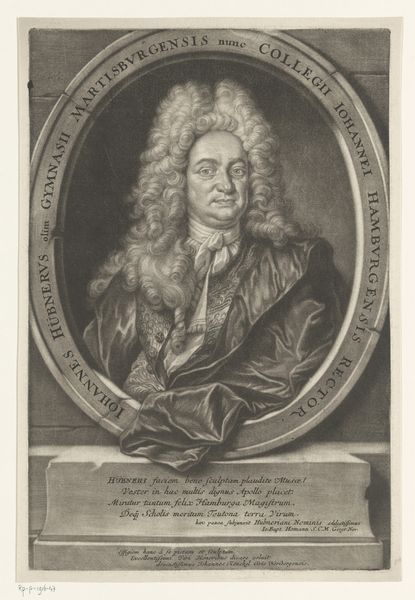
print, paper, engraving
#
portrait
#
baroque
# print
#
old engraving style
#
paper
#
portrait reference
#
pencil drawing
#
history-painting
#
engraving
Dimensions: height 327 mm, width 201 mm
Copyright: Rijks Museum: Open Domain
Editor: This is "Portret van Gotthelf Friedrich von Schönberg" by Martin Bernigeroth, made sometime between 1704 and 1733. It's an engraving on paper, currently housed in the Rijksmuseum. The detail is amazing, but I'm curious about the choice to reproduce it as a print, especially of someone who looks rather wealthy. What’s your take on it? Curator: This engraving, like many prints of the period, acts as both an artistic expression and a form of currency. The production process itself, the labor involved in creating the plate and the print, elevates it beyond a mere portrait. Consider the accessibility – a print could be circulated and consumed by a wider audience than an original painting, thus extending Schönberg’s reach and influence beyond his immediate circle. It also represents a commercial transaction, an exchange of labor for capital. Does the mass production of this artwork speak to ideas of luxury or accessibility in the Baroque Era? Editor: So, you're saying the print medium itself is part of the meaning, almost democratizing his image through wider distribution? Is the print's reproducibility and affordability then in tension with his wealth and status? Curator: Precisely! Think about the paper, the ink, the engraver's tools, and the labor-intensive process involved in creating this image. All of those choices communicate the complex networks of production and consumption that underpinned 18th-century society. The materiality of the print invites us to consider the social and economic context in which it was made and circulated. How might the choice of paper quality further reflect Schönberg’s status or the intended audience? Editor: That's really interesting. I was so focused on the portrait itself. Now I'm wondering about the supply chain and the audience's socio-economic status! Thanks! Curator: Absolutely. It’s crucial to look beyond the subject matter and consider the means of production, distribution, and reception when analyzing any artwork.
Comments
No comments
Be the first to comment and join the conversation on the ultimate creative platform.
